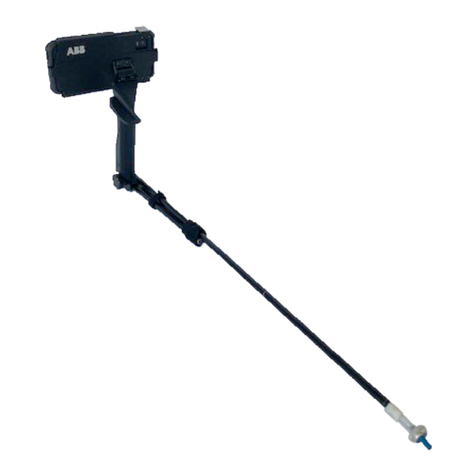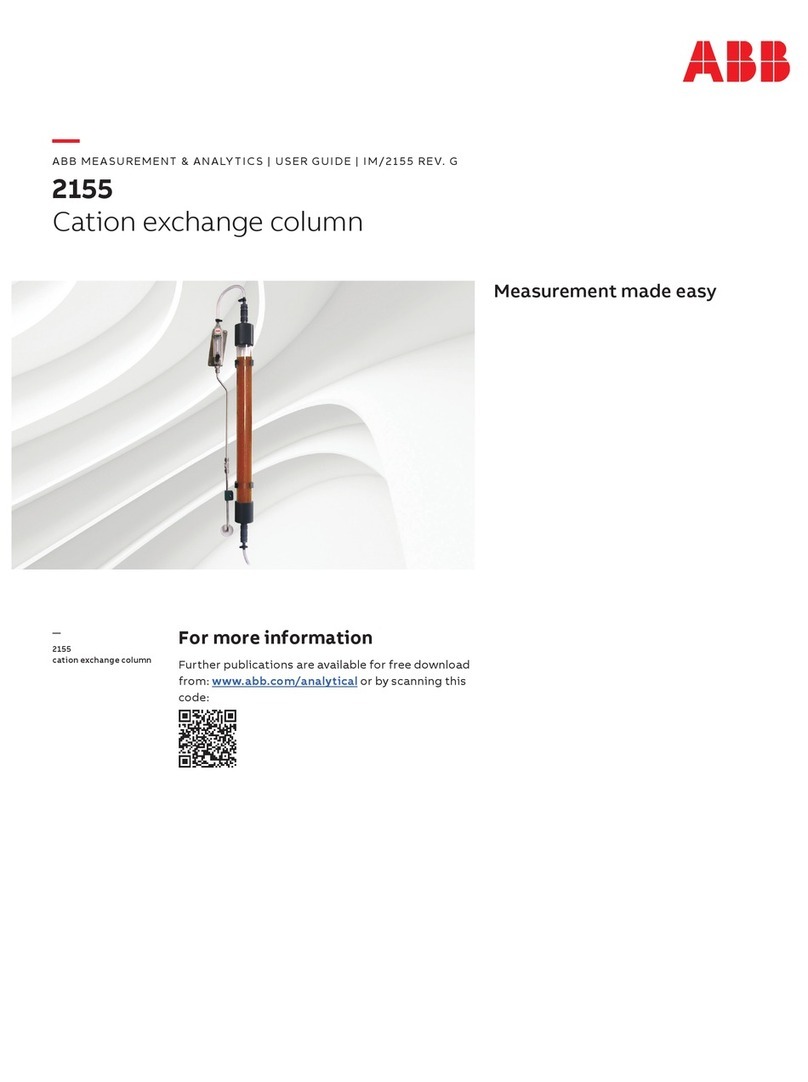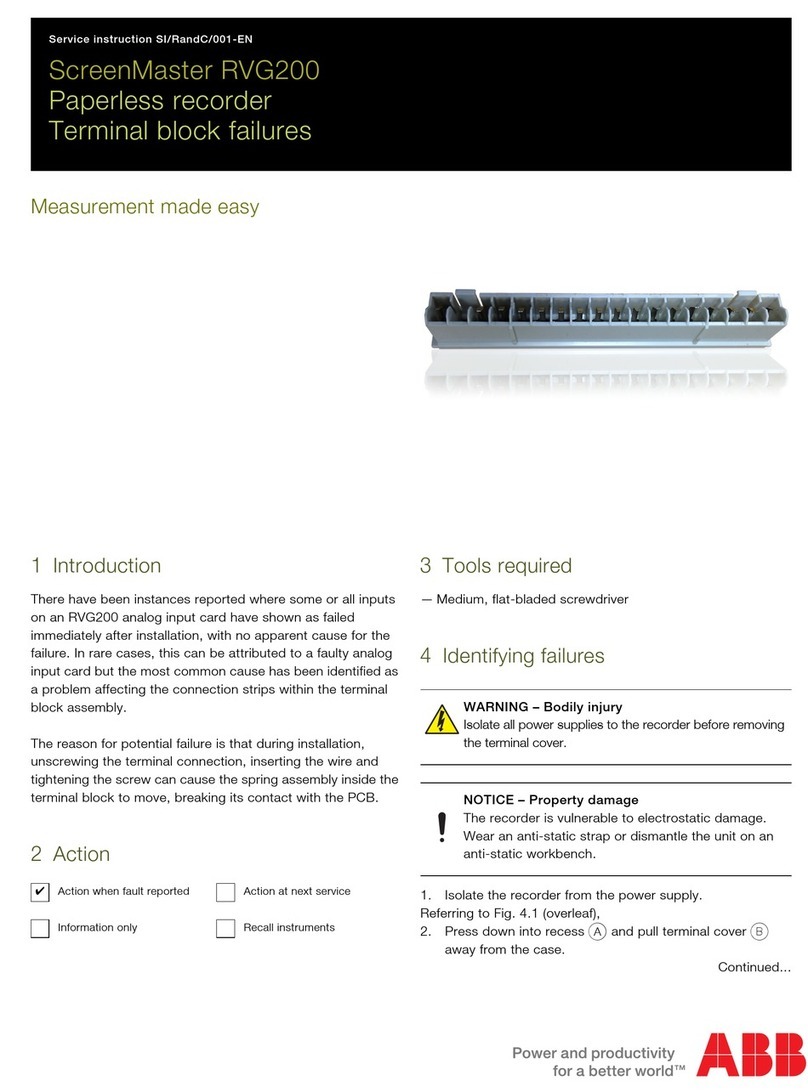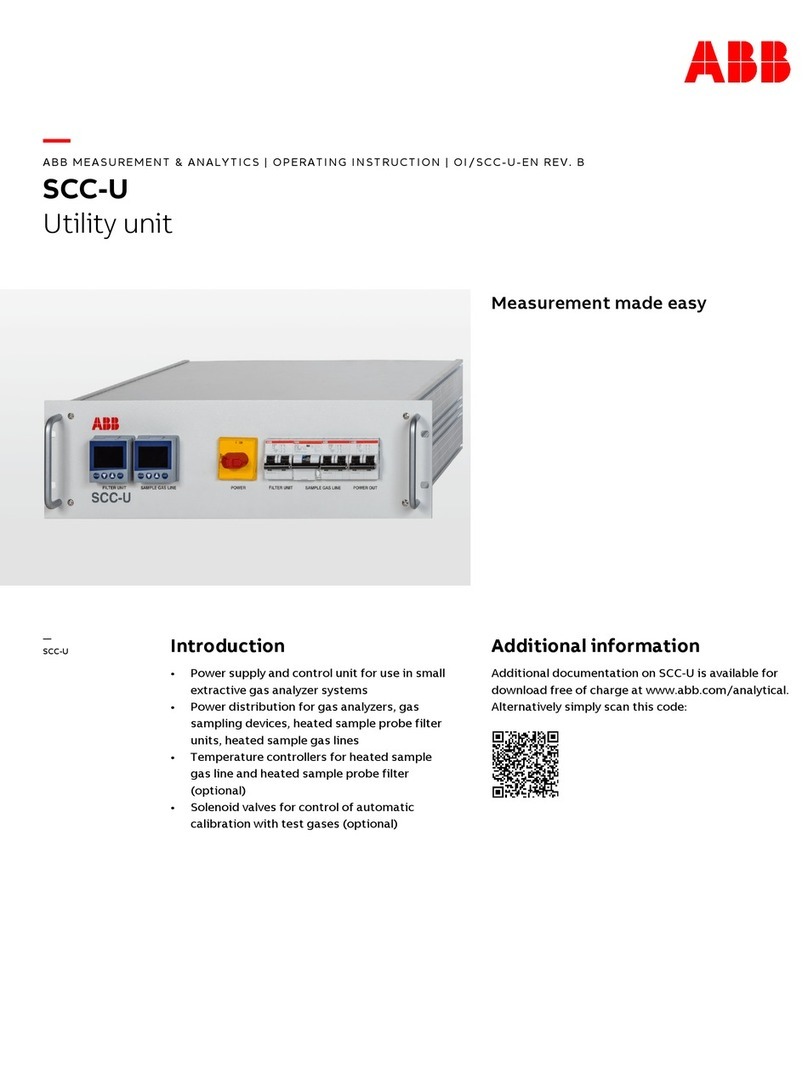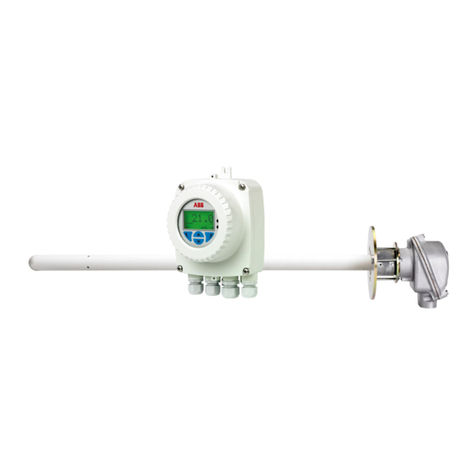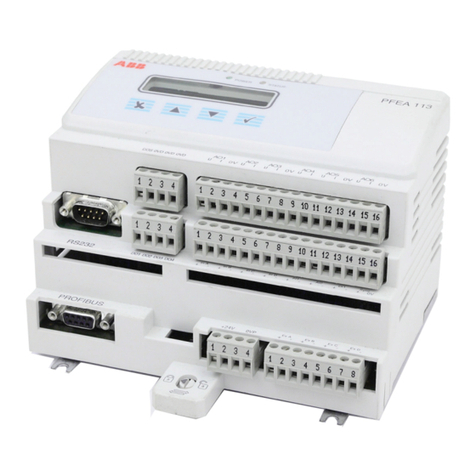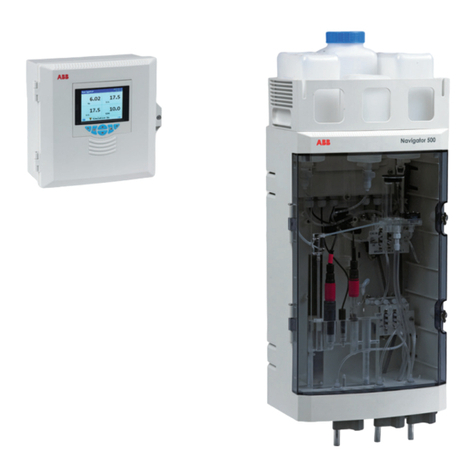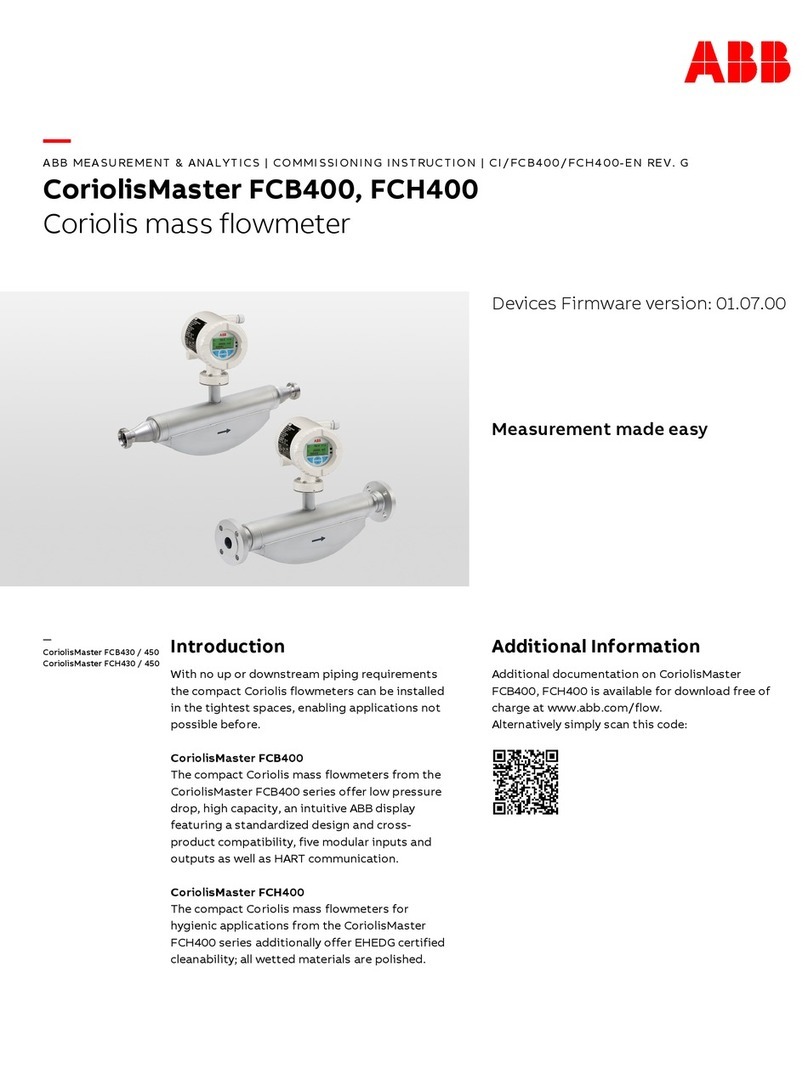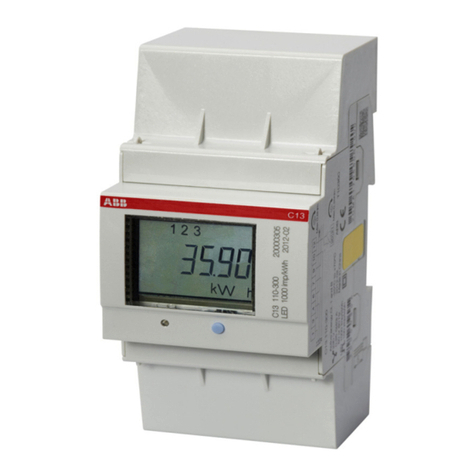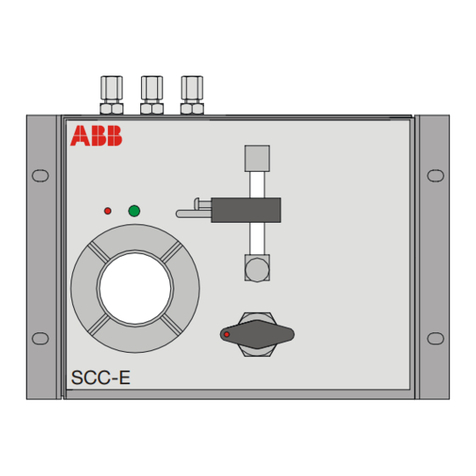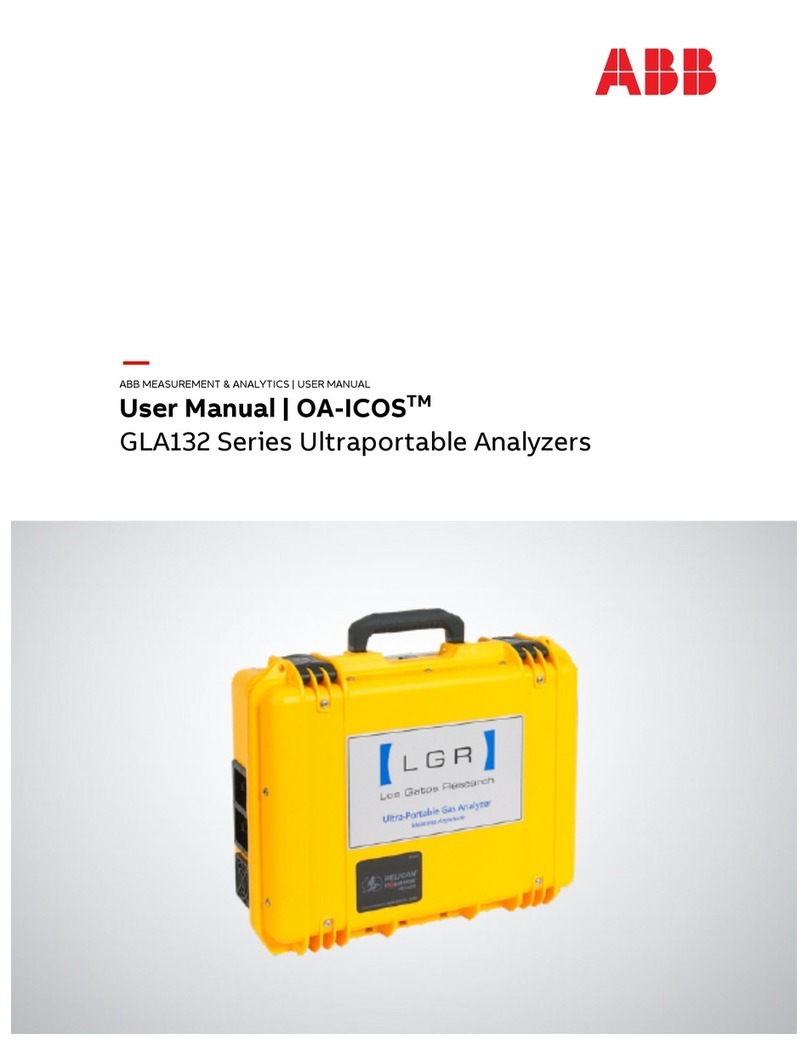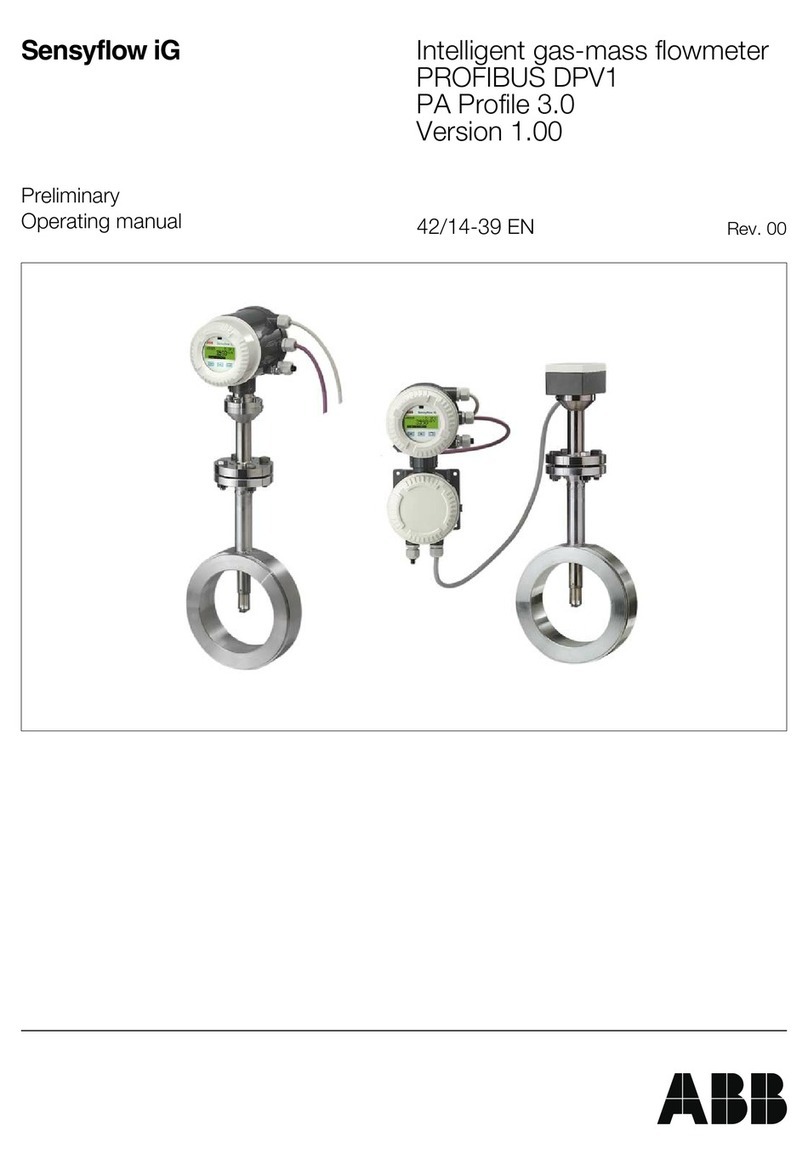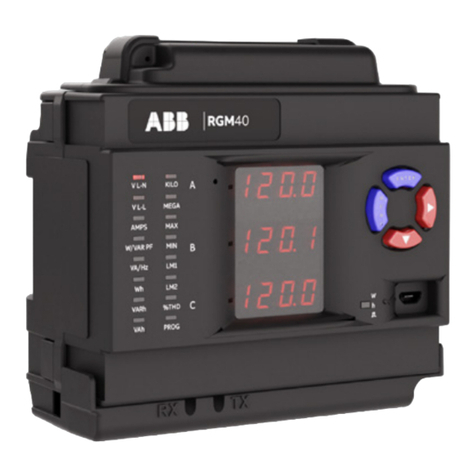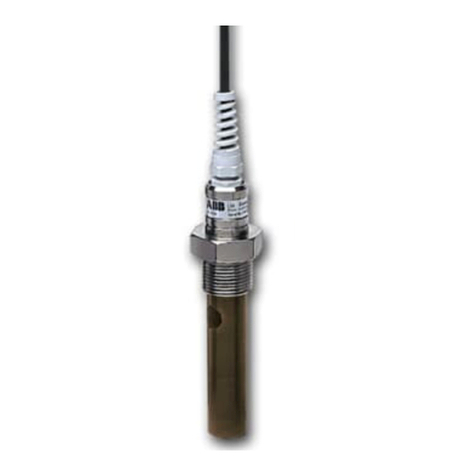
4CI/ADS550–EN Rev. D
1Sample requirements
1. Ensure the sampling point is as close as possible to the
wet-section and provides a thoroughly-mixed representative
sample.
2. Sample must contain <10 ppm suspended solids with a
particle size no greater than 60 µm. (If particle sizes exceed
60 µm, use a 60 µm filter.)
3. Sample temperature must be within the range 5 to 55 °C
(41 to 131 °F).
4. Sample flow rates must be within the range 100 to
300 ml/min. (6.10 to 18.30 cu in./min.) – recommended
150 ml/min (9.15 cu in./min.).
5. Sample pressure must not exceed 2 bar gauge (29 psi).
2Locating the wet-section
Referring to Fig. 1:
1. Locate the wet-section / transmitter indoors in a clean, dry,
well-ventilated, easily-accessible area.
2. Do not locate in rooms containing corrosive gases or vapors –
for example, with chlorination equipment or chlorine gas
cylinders.
3. Select a location not subject to strong electrical and magnetic
fields. If this is not possible (for example, where mobile
communications equipment is present), use screened cables
within flexible, earthed, metal conduit.
Note. If the measured sample temperature exceeds
55 °C (131 °F), the calibration valve opens automatically
to protect the dissolved oxygen sensor from thermal
overload. The valve closes after 30 minutes, but if the
sample temperature still exceeds 55 °C (131 °F) the valve
re-opens.
Fig. 1 Locating the wet-section
Maximum cable distance
to transmitter
30 m (98 ft.)
IP54
55 °C
(131 °F)
Max.
0 °C
(32 °F)
Min.
0 to 95 %
Humidity Avoid
vibration

